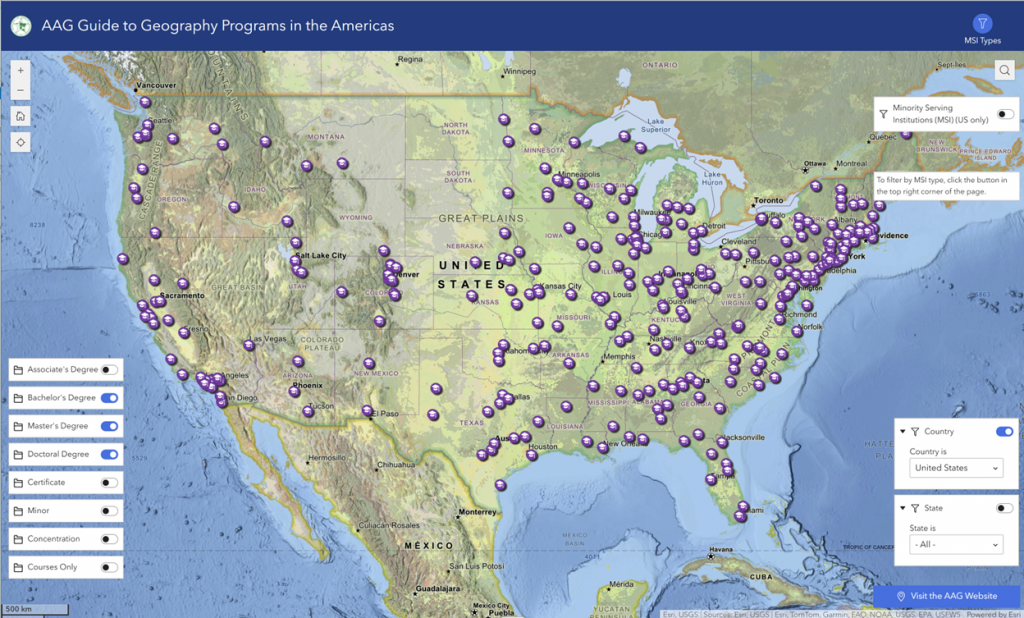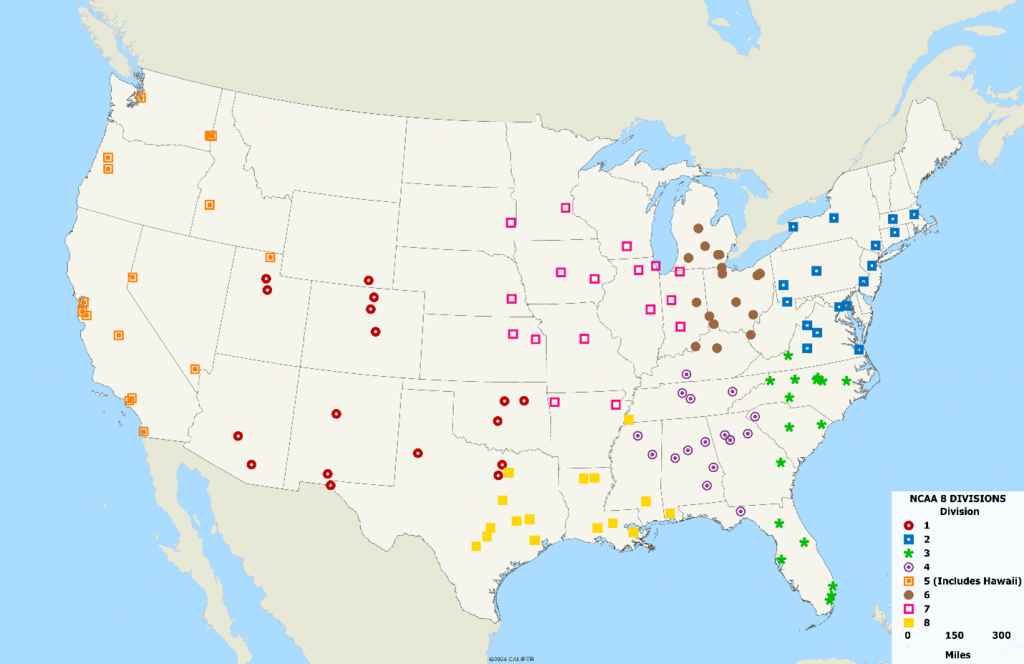A year ago, we wrote about how the NCAA Needs a Geographer while trying to make sense of the March Madness brackets. Since then, lots of realignment has happened within the conferences and geographically, they make little to no sense. This is highlighted perfectly by the classic Big 10 commercial that they have used for years showing a geographic representation of the conference, which used to make a lot of sense when most of the schools were based in the Midwest. Now that they show California, it just comes across as silly, but even more silly are the distances these student athletes will travel to compete when there are schools much closer that they could play against. So, how should we align the conferences? This requires the work of a geographer.
First, we want to point out that we will be aligning the conferences based on FBS football only, which is 134 schools in 10 conferences. We also will point out that there are plenty of qualified people to do this, and surely someone else has already tried. According to US News and World Report (usnews.com/best-colleges), 256 of 1,827 of the schools included in their analysis offer a major in geography, and no doubt there are many more that offer courses.
Here is a map, from the AAG, of programs in the US that offer at least a bachelor’s degree with a major in geography – clearly, there is NO shortage of qualified people to help them.

The conference names of course offer mathematical challenges (Big 10, Big 12, Pac 12 have counting problems to say the least) as none of these schools have the number of members that their conference name suggests. While there were certainly geographical challenges before, the recent breakup of the Pac-12 certainly instigated many of the problems we discuss today. The Pac-12 effectively disintegrated and is now the Pac-2 (Washington State and Oregon State). So where did they go?
- The “west” division of the Big 10, which now has 18 teams, consists of USC, UCLA, Oregon, and Washington
- The Big 12, with 16 teams, now includes Arizona, Arizona State, Utah, and Colorado, but also picked a couple of stragglers from other divisions while losing powerhouses Texas and Oklahoma to the SEC
- Stanford and Cal have found themselves on the Atlantic coast, with substantially warmer waters and fewer earthquakes
- The SEC was the only conference to not feast on the Pac-12 remains, but did pick up Texas and Oklahoma
The remainder of the Pac-12 is essentially playing in the Mountain West conference but picking up the remnants of television contracts, so the recent signing of Mountain West schools to the Pac-12 wasn’t a big surprise.
So, we set out to optimize the conferences to minimize travel distance, making each conference as compact as possible. A simple brute force algorithm was used to find the minimum distance solution. The initial assignment was made randomly, and all possible conference movements were evaluated in each iteration. Regardless of the initial sort order, the algorithm finished in just three iterations in each case. Note to NCAA: this isn’t hard, and it took about 2 seconds to process.
The main issue – we have an uneven number of schools.
The optimization routine yields different results depending on the starting sort order, largely because 7 conferences had 17 teams, 1 had 16, and it depends on the initial order of the schools what the results are.
We should drop the bottom 7, but don’t have the courage to make those decisions. That would mean 8 conferences of 16 teams, which is perfect. So instead, we took the cowardly route and added the FCS winner from last year, South Dakota State, hailing from Brookings, SD. This stabilizes the results, and we got the same results regardless of sort order, again in just 3 iterations.
The assignments are shown on the map below –

We have taken the liberty to name the conferences on your behalf, and wisely avoided names which include the number of teams. Don’t blame us if your team isn’t where you would like it, it’s just mathematics:

